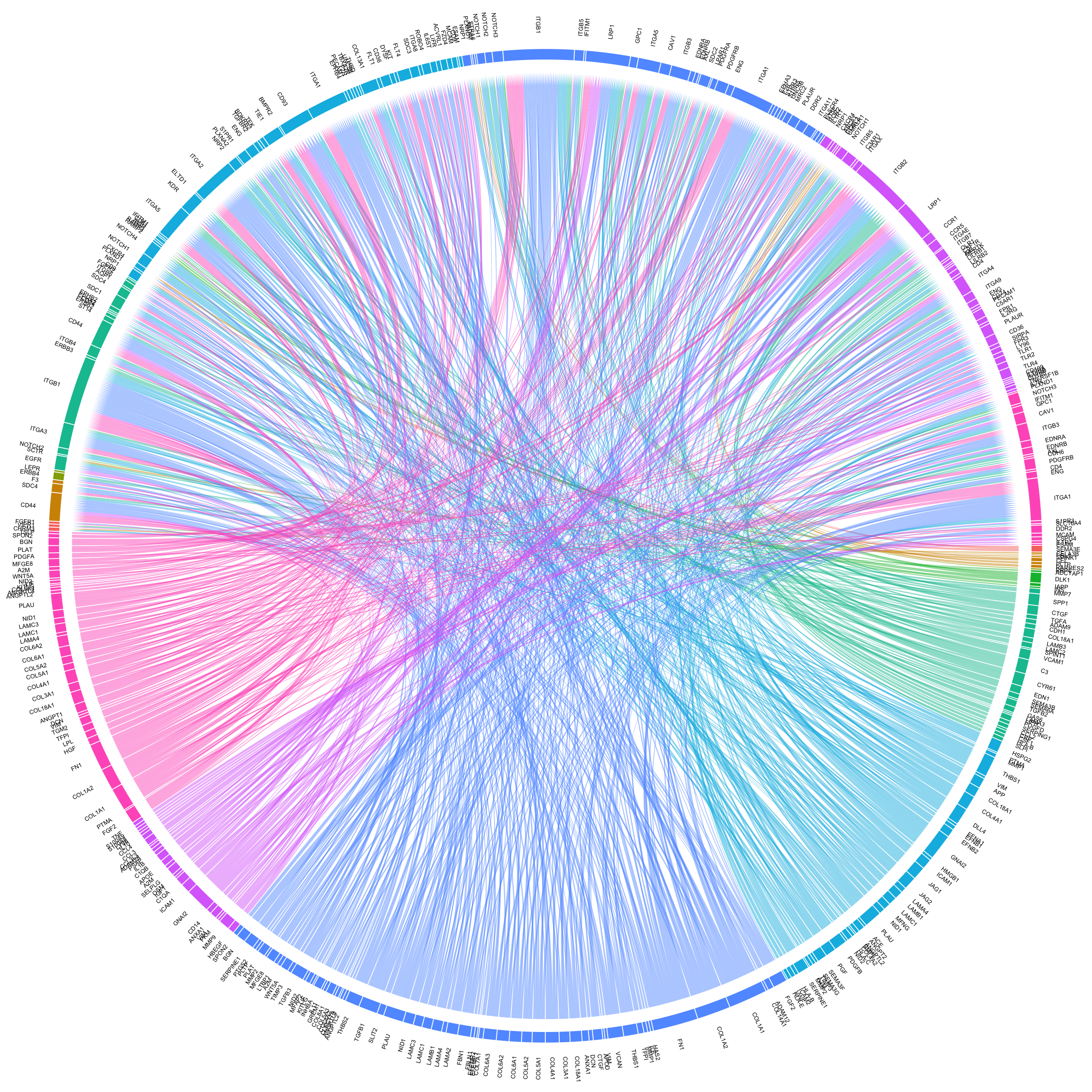scRNAseq connectomics
Connectome is an R toolkit to explore cell-cell connectivity patterns based on ligand and receptor data in heterogeneous single-cell datasets. It is designed to work with Seurat from Satija Lab.
This software compiles and extends the methods described in Raredon MSB et al (2019) doi:10.1126/sciadv.aaw3851. A preprint on Connectome is available at https://www.biorxiv.org/content/10.1101/2021.01.21.427529v1
Currently capable of creating mappings for human, mouse, rat, and pig, against the FANTOM5 ligand-receptor data found in Ramilowksi JA et al (2015) doi:10.1038/ncomms8866, or against any user-provided list of paired ligand-receptor interactions.

Installation
To install Connectome in R, you may run:
library(devtools)
install_github('msraredon/Connectome', ref = 'master')Functions to analyze a single tissue system:
CreateConnectome takes as input a Seurat 3.0 object and uses the active identity slot to define nodes for network analysis. The output of this function is an edgelist connecting pairs of nodes via specific ligand-receptor mechanisms, with many edge attributes allowing downstream processing and filtration.
FilterConnectome is a streamlined way of reducing the above edgelist (which is generally large) to a smaller subset of edges more likely to be of biological and statistical interest. Identical functionality can be achieved with the base subset() function
NetworkPlot provides a simple way to visualize networks of interest. It is a wrapper for the R package igraph, and allows filtration on all arguments which can be passed to FilterConnectome.
Centrality creates a paired centrality plot allowing identification of cell types dominating production or reception of specific modes of signaling. Allows filtration on all arguments which can be passed to FilterConnectome.
SignalScatter aids in identification of top cell-cell signaling vectors within a network of interest.
CellCellScatter aids in identification of top signaling mechanisms between a specified source and target cell of interest.
CircosPlot replaces the hive plots displayed in the original manuscript. CircosPlot is a versatile plotting function which includes many adaptable parameters and yields easy-to interpret quantitative graphs using the R package circlize. Allows filtration on all arguments which can be passed to FilterConnectome. Both edgeweights can be displayed, and the edges can be colored by either source or target cell. Useful for visualizing niche-networks and mechanism interactomes.
EdgeDotPlot is an elegant way to visualize both edgeweights (signal strength and signal specificity) at the same time, for a sub-system of interest. It also shows how highly weighted edges in one population compare to lowly-weighted ones in another, which can be useful for answering key scientific questions.
Functions to compare cell-cell signaling across two tissue systems:
DifferentialConnectome Allows direct quantitative comparison of two connectomes. Requires exactly the same edges to be present, so that there is always a reference value and a test value.
DifferentialScoringPlot Provides a comprehensive heatmap view of differences of interest between two connectomes.
CircosDiff Creates a CircosPlot of a differential connectome, leveraging an always positive ‘perturbation score’
Functions to compare cell-cell signaling across two or more tissue systems:
CompareCentrality Takes any list of connectomes and compares sending- and receiving- centrality, side-by-side, for a given network subset.
Reference
Please cite “Computation and visualization of cell–cell signaling topologies in single-cell systems data using Connectome” https://doi.org/10.1038/s41598-022-07959-x
or “Single-cell connectomic analysis of adult mammalian lungs.” Science Advances 5.12 (2019): eaaw3851. doi:10.1126/sciadv.aaw3851